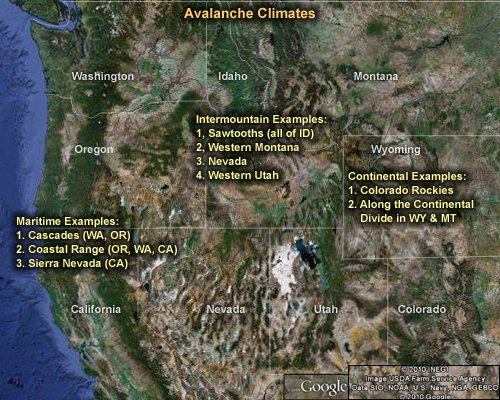As slope gradient increases avalanche danger increases, the prime gradient is 38degrees. As gradient increases the risk of avalanches start to decrease again. Around 50 degree one can expect frequent sluffing and small scale slabs, thus reducing the chance of deeper slabs running. 60 degree slopes can create large slabs however they less frequent then on a slope around 40 degrees.
In continental and intermountain avalanche climates, avalanches on slopes steeper than 50deg. are a rare sight. Where maritime climates are wetter large scale avalanches can be found on 60deg slopes.
At 30deg avalanches are uncommon yet 38deg is the prime avalanche gradient, I am sure you can see the importance of 8 degrees and thus guesswork may not be you best answer. I would advise using an inclinometer to measure questionable gradients.
Gradient -Avi Activity
10-25 - Slush Flows (Arctic Climate),Slabs very unlikely
25-30 - Slabs in Isolation, only in very Unstable conditions
30-35 - Frequency increasing closer to 35deg. Fairly unstable needed
35-45 - Majority of avalanches occur in this gradient bracket, 38 deg. Being the
optimum gradient for avalanche activity. Slabs common, can be large
45-55 - Smaller Slabs and sluffing increasingly common, number of larger
slabs decreasing
55-90 - Sluffing to be expected, large slabs very uncommon

When the snowpack is very unstable, it is possible to trigger a slide on a steeper slope when you yourself are on a slope connected to it, this is know as remote triggering. If you are on an adjecent slope you can trigger a steeper slope next to the slope your are on and the stepper slope may also bring your slope down too. In certain situation is slabs are hard and thick you can be pulled off a flat ridge top by slopes below sliding.

Comments